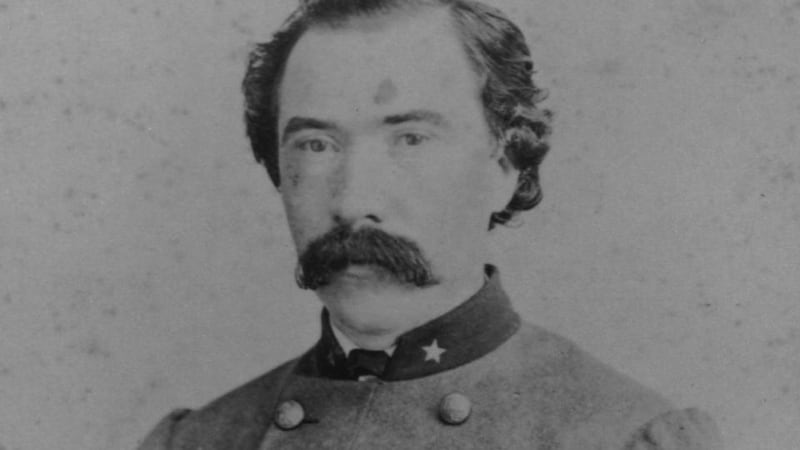He was just nine and his sister all of 10 years old when they boarded the Liverpool ship. Imagine the mind-state of Dick and Honora Dowling as both were despatched from north Galway to New Orleans by their traumatised parents in 1846.
That separation would extend all of 5,435 nautical miles, first east across the Irish Sea and then west over the Atlantic ocean. Pat and Bridget Dowling had been forced into the workhouse after their eviction from farmland in the barony of Dunmore, some eight miles north of Tuam. Their two eldest children would have been with family friends, or so they hoped, as they sailed into the Mississippi delta.
Having survived the crossing, the terrified young children still faced no certain future. Already, a Harper's Weekly cartoonist was reflecting a weariness on the part of north Americans towards the waves of distressed humanity generated by the Famine here. "The balance of trade with Great Britain seems to be still against us" ran the caption to an image of a five-storey Galway poor house on a heaving, seething deck.

Fortunately, the young Dowlings made a new home in “Sin City”, as New Orleans was known. Records confirm that Dick was living with folk from his parents’ parish four years later. Several slave dealers, tailors, a tobacconist and some Irish labourers were among immediate neighbours in the Faubourg Marigny district. The delta’s thriving riverboat traffic provided lucrative employment for arrivals, who would eventually displace negroes on the waterfront.
However, when the anti-immigration Know Nothing party achieved victory in New Orleans elections of 1856, Irish residents were banned from the workforce. And so Dick Dowling looked west to Houston, Texas, to make another start. The frontier town of just 4,000 had just secured its first railroad link, and the cotton industry was booming at the time.
His arrival at Allen's Landing in 1857 is one of many references collected by the late Ann Caraway Ivins, a descendant with ample share of Dowling determination. Timothy Collins was working in the day job at NUI Galway's (NUIG) library when he had first-hand experience of it. The Texan cultural anthropologist seeking information about her roots had spent all of 20 years on her quest.
Ivins discovered that during a brief, but busy, life, her great great grand-uncle became a Texan saloon proprietor and owner of real estate, who distinguished himself in one of the most famous skirmishes of the American civil war. In September 1863, Dowling and fellow militia in the Davis Guards repulsed a Federal invasion fleet intent on taking Texas when they captured two gunboats, took several hundred prisoners and large quantities of munitions. This "battle of the Sabine Pass" was compared by Confederate president Jefferson Davis to the historic Persian- Greek confrontation at Thermopylae.
So how could a boy who has survived famine and a transatlantic crossing find himself on the “wrong side” of the American civil war, shoulder to shoulder and boot to boot with those defending the right to keep slaves? It was a question that Timothy Collins asked himself more than once when, with some trepidation, he made a promise to a seriously ill Ann Caraway Ivins to finish the work she had started. Nine years later, he has done just that.
As he explains in the newly published Dick Dowling – Galway's Hero of Confederate Texas , the right to "home rule" sought by southern US states earned much sympathy among its Irish residents, a small number of whom became slave-keeping entrepreneurs. Irish immigrants to the south had little or no attachment to the north, and the distance between Houston and Boston was similar to that between Dublin and Moscow. Dick Dowling was among those who believed that separation from the Union was necessary after Abraham Lincoln was elected in November 1860.
Although he survived the conflict, Dowling did not live long enough to enjoy his hero status. He contracted yellow fever at the age of 30. When the mosquito-borne virus hit Houston in 1867, he had mobilised the Fireman’s Charitable Association and he brought brandy to houses for medicinal purposes. At some point he was bitten. Less than a month after his wife Annie gave birth to a daughter, he died.
Houston erected a statue to its Irish Texan defender, and a plaque in Tuam town bears his name. Collins believes it is the first, and possibly the only, tribute here to an Irishman who fought with the Confederates. It was a matter of chance, he says. “Had that nine-year-old child boarded a different ship for a different port, he might have fought on the other side of that civil war.”










